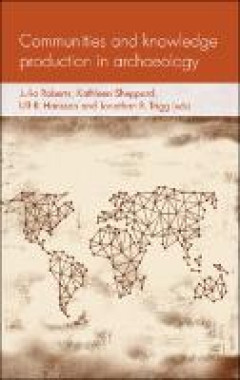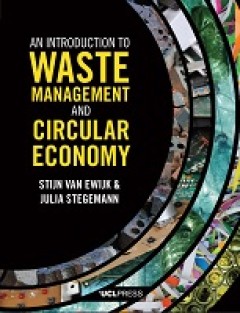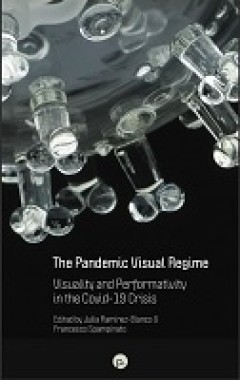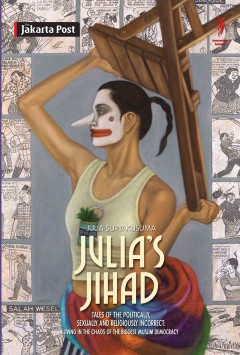Ditapis dengan

E-Book Communities and Knowledge Production in Archaeology
The dynamic processes of knowledge production in archaeology and elsewhere in the humanities and social sciences are increasingly viewed as the collaborative effort of groups, clusters and communities of researchers rather than the isolated work of so-called ‘instrumental’ actors. Shifting focus from the individual scholar to the wider social contexts of her work and the dynamic creative pr…
- Edisi
- -
- ISBN/ISSN
- 9781526134561
- Deskripsi Fisik
- 269 halaman
- Judul Seri
- -
- No. Panggil
- 930.1 ROB c

E-Book An Introduction to Waste Management and Circular Economy
This introductory textbook provides an essential interdisciplinary guide to waste management and circular economy. It helps students to understand the drivers of waste, the environmental, social, and economic impacts of waste generation, and best practices and technologies for waste management, recycling, energy recovery and disposal. With helpful, full-colour diagrams throughout, each chapter …
- Edisi
- -
- ISBN/ISSN
- 9781800084667
- Deskripsi Fisik
- 409 halaman
- Judul Seri
- -
- No. Panggil
- 332 EWI a
E-book The Genius of Architechture or The Analogy of That Art with Our Sensat…
The usual means of giving form and expression to a building in classical architecture was through the use of the orders — in Greek architecture the Doric and Ionic as a rule (though the Corinthian Order was also a Greek invention) with the addition in Roman architecture of the Tuscan and the Composite. Variants of all five orders were used throughout the Renaissance. Their proportions and the…
- Edisi
- -
- ISBN/ISSN
- -
- Deskripsi Fisik
- 226 hlm
- Judul Seri
- -
- No. Panggil
- 720.22 BLO t

E-Book The Pandemic Visual Regime: Visuality and Performativity in the Covid-…
The Covid-19 pandemic has been expressed in various ways through visuality and performance, and some of its more nuanced cultural implications have taken place in a realm that goes beyond words. Through the exploration of the visual culture produced during and in response to the Covid-19 pandemic, The Pandemic Visual Regime: Visuality and Performativity in the Covid-19 Crisis highlights the key…
- Edisi
- -
- ISBN/ISSN
- 9781685711245
- Deskripsi Fisik
- 269 halaman
- Judul Seri
- -
- No. Panggil
- 571.98 BLA t
E-book Railways & Music
When the Stockton & Darlington Railway opened in 1825, it was the first steam-powered railway to carry passengers. Since then there has been no shortage of music connected with trains and railways: orchestral pieces and popular songs describing railway journeys; those that celebrate the opening of a new line; work songs and blues describing the hardship of building the railroads, even the first…
- Edisi
- -
- ISBN/ISSN
- 9781862182035
- Deskripsi Fisik
- -
- Judul Seri
- -
- No. Panggil
- 781.68 WIN r
E-book Fashion, History, Museums : Inventing the Display of Dress
It has become easy to become complacent about fashion exhibitions in museums. Their sheer number and extravagant scale have drowned out the skeptics who once questioned the place of fashion in the museum. Yearly, and even monthly, news media outlets report lists of the must-see fashion exhibitions worldwide, anticipating the avid interest of their readership. Richl…
- Edisi
- -
- ISBN/ISSN
- 9781350049017
- Deskripsi Fisik
- 257 hlm
- Judul Seri
- -
- No. Panggil
- 708 PET f
E-book Families and Food in Hard Times : European comparative research
This book, Families and Food in Hard Times, is about our world in the second decade of the twenty-first century and how parents living on low incomes in wealthy societies manage to feed their families. Although very different from the world of Dickens, in some respects today’s world mir-rors elements of his time because of the harsh realities of poverty among large sections of t…
- Edisi
- -
- ISBN/ISSN
- 9781787356559
- Deskripsi Fisik
- 291 hlm
- Judul Seri
- -
- No. Panggil
- 362.5 OCO f
E-book Energy Demand Challenges in Europe : Implications for policy, planning…
The performance of more efficient technologies is often dependent on how they are used by householders, if at all. Moreover, short-term efficiency gains may be wiped out by increasing overall consumption in order to reach newly perceived levels of comfort, convenience and stand-ards. This increase in consumption manifests, for example, through social pressure to…
- Edisi
- -
- ISBN/ISSN
- 9783030203399
- Deskripsi Fisik
- 165 hlm
- Judul Seri
- -
- No. Panggil
- 333.7 ASE e

Julia's Jihad (Tales of the Politically, Sexually and Religiously Incorrect: …
Does the proliferation of jilbabs (headscarves) in Indonesia since 1998 mean the nation has gone hardline? How did democracy happen in Indonesia, which has the largest population of Muslims in the world, and will it stick? Is the term 'Muslim feminist' an oxymoron? Do Muslims even like sex? Julia's Jihad provides the answer to these questions and much, much more: how the nation struggles to ma…
- Edisi
- cet. 1
- ISBN/ISSN
- 978-602-9402-27-8
- Deskripsi Fisik
- xxxviii, 526 hlm; 14 x 20,5 cm
- Judul Seri
- -
- No. Panggil
- 297.27 JUL j

Benang merah timur - barat: Menggali kearifan sambil belajar bahasa mandarin.
- Edisi
- -
- ISBN/ISSN
- -
- Deskripsi Fisik
- xv /173 hlm;12 x 17,5 cm
- Judul Seri
- -
- No. Panggil
- 170 EKA b
- Edisi
- -
- ISBN/ISSN
- -
- Deskripsi Fisik
- xv /173 hlm;12 x 17,5 cm
- Judul Seri
- -
- No. Panggil
- 170 EKA b

ROBERT BADEN-POWELL: Kisah seorang yang berjasa membentuk Gerakan Pramuka Dunia
- Edisi
- cet. 1
- ISBN/ISSN
- 979-605-085-4
- Deskripsi Fisik
- 96 hlm; illus;14 x 21cm
- Judul Seri
- -
- No. Panggil
- 923 COU r
- Edisi
- cet. 1
- ISBN/ISSN
- 979-605-085-4
- Deskripsi Fisik
- 96 hlm; illus;14 x 21cm
- Judul Seri
- -
- No. Panggil
- 923 COU r
 Karya Umum
Karya Umum  Filsafat
Filsafat  Agama
Agama  Ilmu-ilmu Sosial
Ilmu-ilmu Sosial  Bahasa
Bahasa  Ilmu-ilmu Murni
Ilmu-ilmu Murni  Ilmu-ilmu Terapan
Ilmu-ilmu Terapan  Kesenian, Hiburan, dan Olahraga
Kesenian, Hiburan, dan Olahraga  Kesusastraan
Kesusastraan  Geografi dan Sejarah
Geografi dan Sejarah